As last academic year came to a close, Prattfolio interviewed dozens of students around the Brooklyn campus to find out what questions were on their minds and what lines of inquiry they were pursuing in their work—from sculpture to architecture to critical studies. They wondered how their work could have a positive effect on the world and in what ways, through their distinct fields of study and practice, they might improve communities, the environment, and the human condition. They also considered the methods and motivation behind their work, raising questions about how they can make the most of their experience as students and find their voices as practitioners.
Meet just some of Pratt’s next generation of change makers, risk takers, and big questioners.
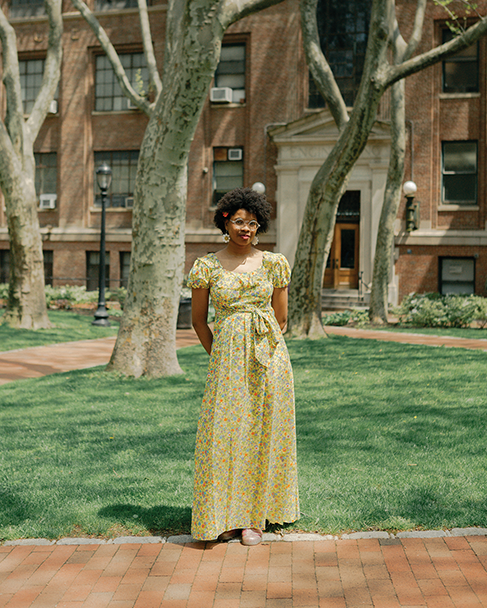
How is the future of fashion going to impact the environment?
I’m in a fashion sustainability class right now, and for our midterm we had to track the supply chains of our favorite fashion companies. It was eye-opening. One of the companies I was researching did a lot of fabric printing, and the dyes they use have heavy metals and carcinogens in them, and they just dump them.
—Sabrina Brokenborough, BFA Fashion Design ’21
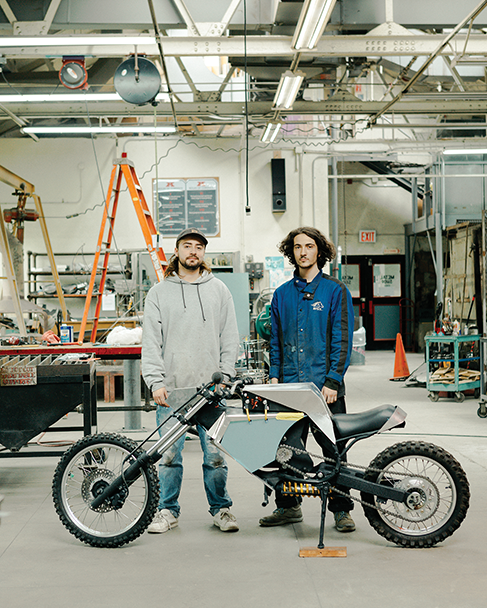
Why hasn’t electric technology caught on?
In doing this project, we found out that the components we’re using haven’t changed in the last 10 to 15 years. Our professor, Larry Au, made a bike when he was an undergrad at Pratt and he used the exact same motor, the exact same batteries. The technology hasn’t evolved. So how can we push that?
—Brandon Terrien, MID ’19
“With this project, our premise was to upcycle an existing dirt bike frame then convert it to electric. Our hope was to reimagine the aesthetics and functionality of urban EVs. How do we make that happen?”
—Luke Lazin, BID ’19
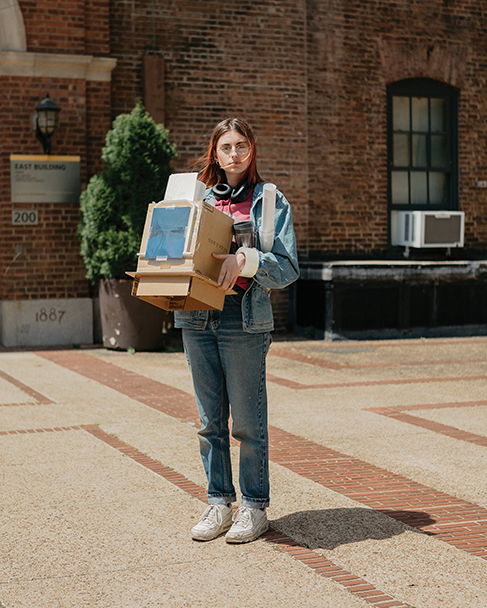
“What is the point of meaning?”
—Hope Morrison, BFA Sculpture ’19
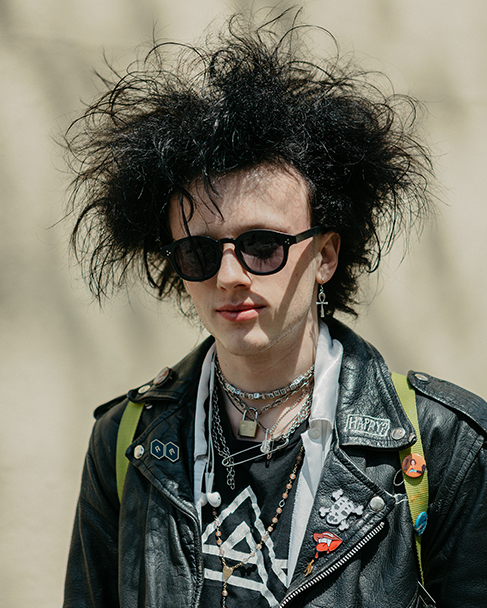
I get really interested in really mundane things
or everyday life moments, and also trash—I’m really interested in trash this year, the kind of things that people throw out.
—Oliver Ward, BFA Photography ’22
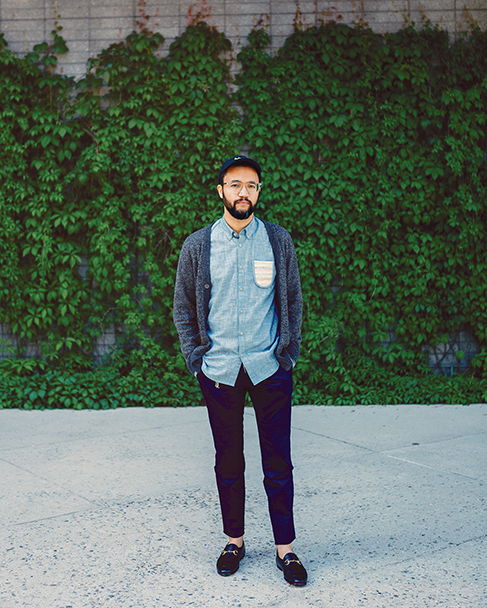
How do you design for a user and not specifically for a technology?
For my projects, I’ve done various types of research, and the one that was most rewarding was an interview observation, actually sitting down with the user and going through tasks. When I helped with the research for the redesign of Pratt’s library website, my group reached out to students on Pratt’s Brooklyn campus to participate. When we met them, we had a list of tasks for them to work through and questions for them after they finished. As a designer, you may think you know what the user wants, but getting their perspective firsthand brings a whole different set of insights, and makes the design stronger and more effective.
—Armon Burton, MSIXD ’20
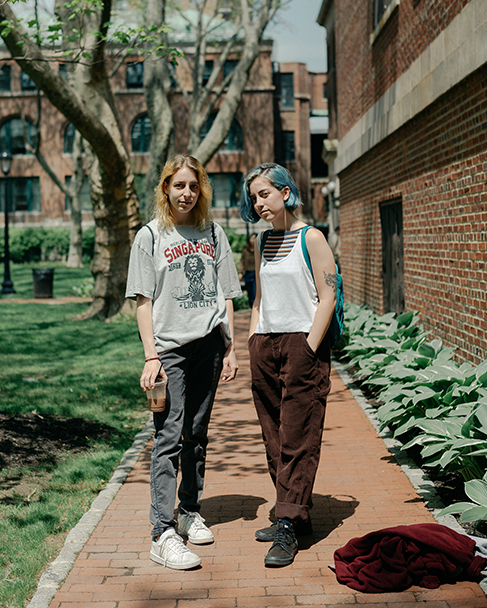
A lot of the things I was exploring this semester had to do with texture. I was doing a lot of ceramics projects that had to do with abstraction of shape and texture, and how you could still recognize them. In other classes I was dealing with texture and video forms.
—Madison Costello, BFA Sculpture ’21
The thing that I’ve been exploring recently is the idea of ‘in between’ . . . how do we find a comfort existing in between things instead of on either side of the in-between.
—Meghan Aubuchon, BFA Communications Design ’21
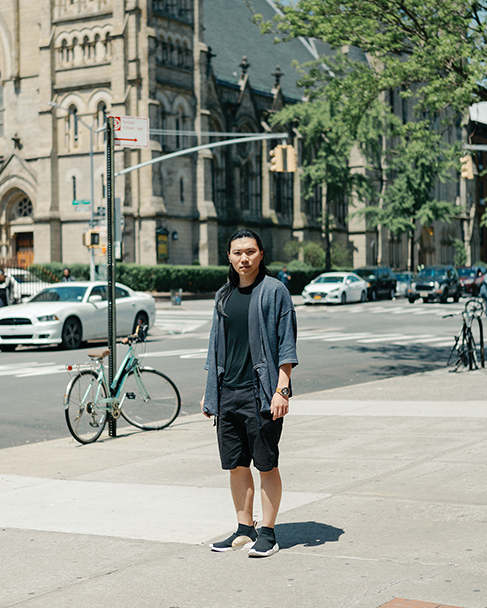
How do I bring humanity, humanism into architecture?
For my thesis, I made a market for people in a very poor village—an old but important city on the Silk Road. I was trying to go back into the history, try to dig more into humanity, how architecture can affect people, from inside. It’s more about material and how people feel. For this, I only used bricks, because the local people use bricks, it’s vernacular.
—Long Long, BArch ’19
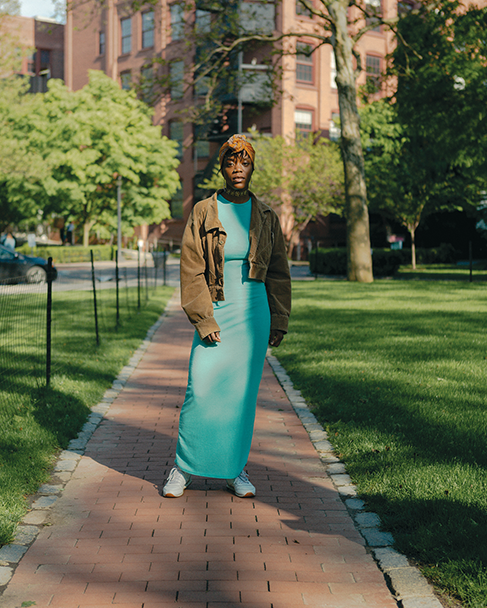
For a recent project I did for LCD [Light, Color, and Design], we had to find an issue that was affecting the environment that was personal to us. My project had to do with agriculture, and how women in Haiti, where I’m from, have to farm and do all this hard labor but are not able to own land. I was reading about it and thought,
how are we in 2019 and women still don’t have the right to own land?
So I decided to make an 18 x 24-inch charcoal drawing of women in nature farming. The point of my piece was to show faces, to show the people hidden behind the hard labor and work and food that’s being made.
—Neyssa Pierre, BFA ’22
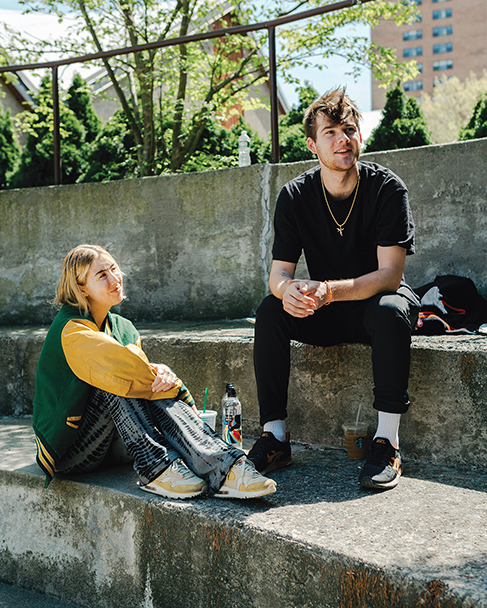
Something that I’ve always thought about: How many people are doing the exact same thing at the exact same time in the world?
—Emily Murdock, BFA Painting ’22
Also doppelgangers. Someone that looks exactly like you somewhere else is wild to me—how close our gene pools can be, even if we’re separated by thousands of miles, just by chance.
—MacCray Rentel, BFA Photography ’22
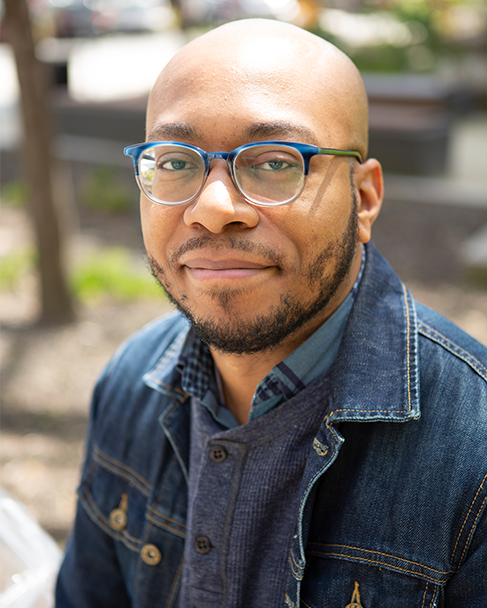
Am I going to leave a positive impact on my community?
Am I actually going to be able to make change, positive change, for people who have been historically marginalized and people being marginalized today?
—Timothy Anderson, MS City and Regional Planning ’20
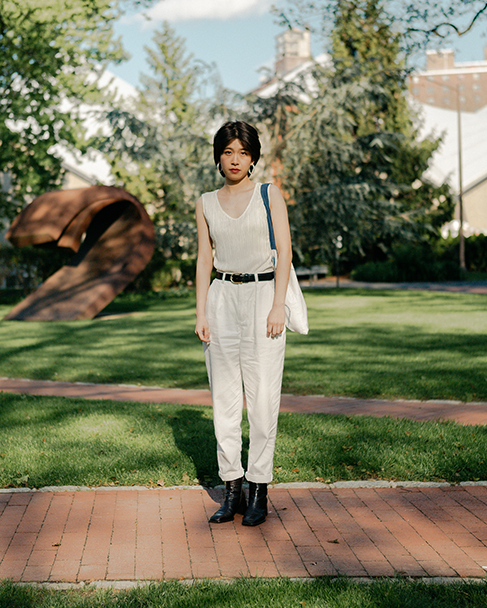
What’s the purpose of everything?
This is a trigger for me to dig into my topic, to find out what’s the purpose of that thing, or the purpose to me, or to specific groups of people. My thesis project is about extraterrestrials, using that topic as a lens or a mirror to reexamine humanity.
—Huating Yu, MFA Communications Design ’19
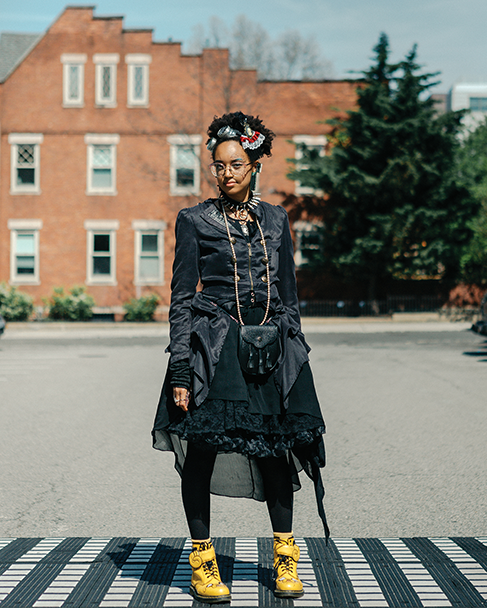
Did I make the right move moving to the United States?
I was born and raised in France. What feels like a yes is that I’m getting something 100 percent out of Pratt. The thing that keeps me going are my comics—I’ve been doing comics for a while, and I started the Pwatt series in 2015, part of a larger set of Dill Comics. I feel like what I’m doing with my comics is advancing, because in Crit Viz, you can kind of do whatever you’re going for—my goal is to publish a book, and I’m doing that for my thesis.
—Calyn Pickens Rich, BFA Critical and Visual Studies ’20
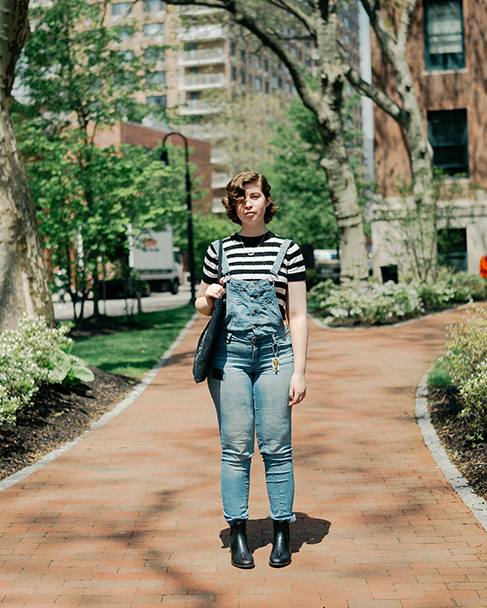
What new ways can I combine my different skills to better my work?
I come from a very scientific background and a very artistic background, so I’m still looking for ways to synthesize those in a better way. My interest in analytical research has been an invaluable resource in my efforts to portray theoretical concepts in my work. I’m about to show a mini collection that’s athletic and athleisure wear based on the social philosophies behind different houses of architecture.
—Finley Swede-Taillon, BFA Fashion ’20
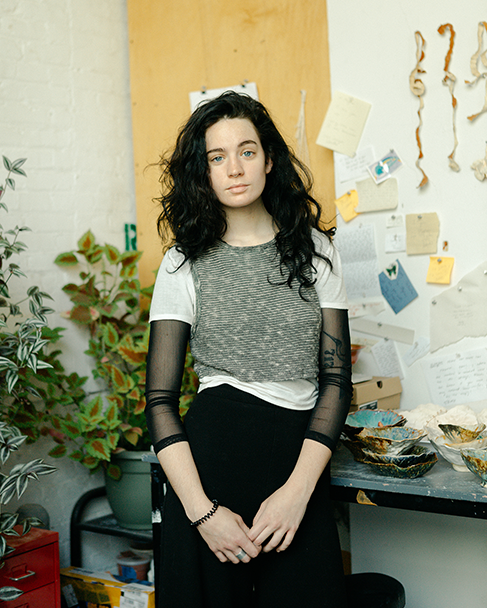
How to re-create natural beauty is my biggest interest and concern.
My thesis was clay vessels that I had hooked up to microphones and amps. I choreographed a movement performance that was all about interacting with the naturally occurring sounds from these very odd, unfired things. My body interacted with them—some of them I stuck my head in, or my arm. It was very loud. Essentially, it was scientific feedback I was working with, but that’s only if you’re looking at it from a technical standpoint. It’s less about that and more about what clay can do, the material qualities of it that aren’t tactile or physical.
—Meghan Rutzebeck, BFA Sculpture ’19
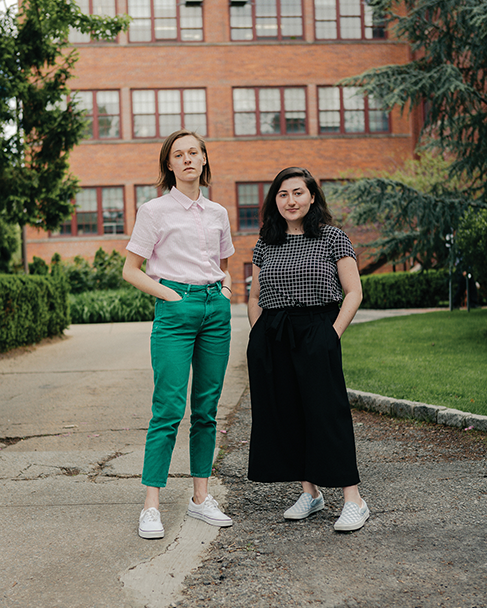
What am I going to make next?
I made two stop-motion short films this year, and I’d love to keep making them. I got really interested in the Opportunity rover over the past year, so I made one of my films about Martians. Also, I’m on the equestrian team at Pratt, so I wanted to make a film about horses—it’s about a cowgirl and her horse jumping over the moon.
—Olive Lagace, BFA Communications Design ’19
I keep thinking about how my definition of research is changing.
Especially when it comes to making visual art. I was always taught to use a database via a library site, within a traditional academic context. How do I research beyond that in a way that is still relevant and acceptable. I like reading blogs about specialized topics, which can be hard to find, so it’s a lot of googling for specific phrases. I wrote and designed a thesis called ‘All Men Are Friends’ about the shared kinship of masculinity, and for that, there’s obviously a lot written on gender that I was reading, but I was also looking for niche ideas that hadn’t been written about. A whole part of the thesis is about the idea of ‘calling dibs,’ and there’s no, to my knowledge, scholarly writing on that, so that [reading blogs] was my process.
—Basia Kurlender, BFA Communications Design ’19
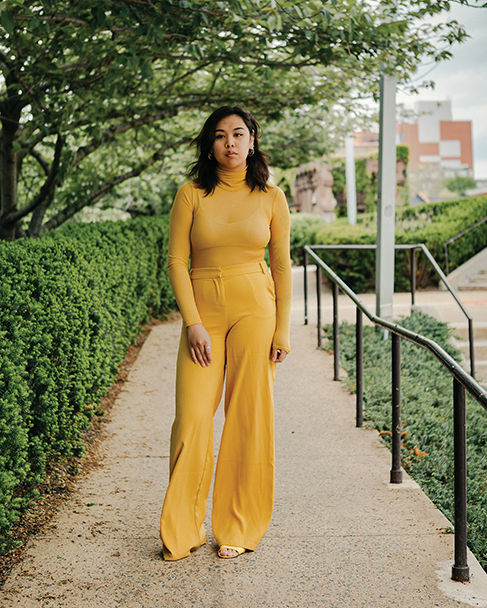
How can I incorporate color in a meaningful and important way?
I like to think of myself as an advocate for color. Color is a good way of standing out, it feels personal and impersonal at the same time, allowing you to be noticed, but at the same time to be ‘you’ and not confine yourself.
—Mikayla Bacani, BFA Industrial Design ’19
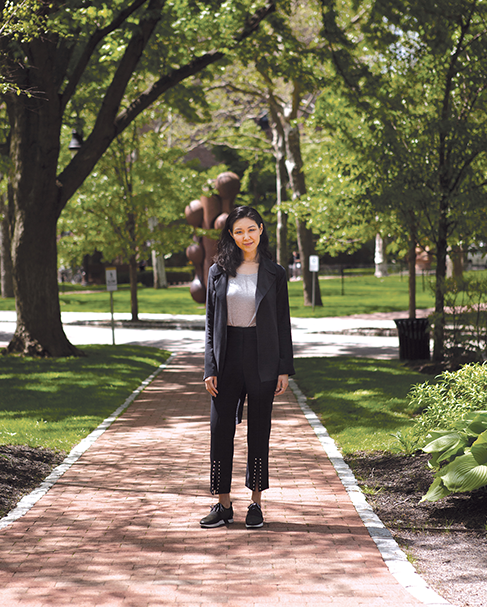
How do I redesign the world so it’s more human?
The world is designed in a way that’s very industrial focused. How do I make design more enjoyable, making people’s lives more interesting and empowering? I feel like we can be much happier, be more ‘us,’ be more creative, if the world is designed in a way that accommodates that sort of thinking.
—Yeon Jee, BID ’09; MPS Design Management ’19
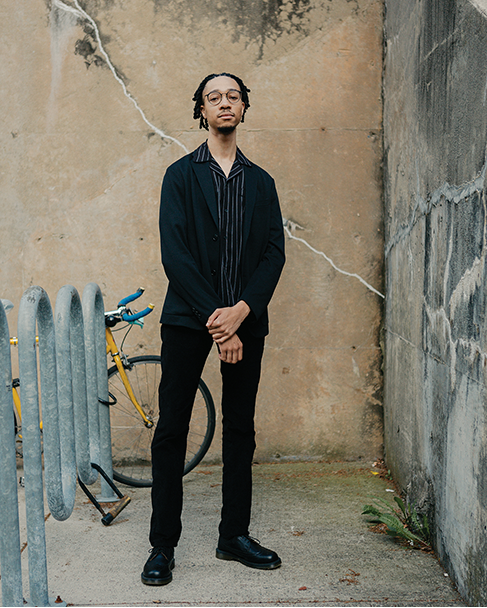
What’s next?
I’ve felt myself growing within the two years I’ve been here and I hope that growth continues. My thesis helped me find my voice as a designer—to break away from Western, European principles. Being African American, those types of design principles didn’t resonate with me and where I come from, so to take my own experiences and inject them into my work is what I hope to do.
—Keith Garrett Wright, MFA Communications Design ’19